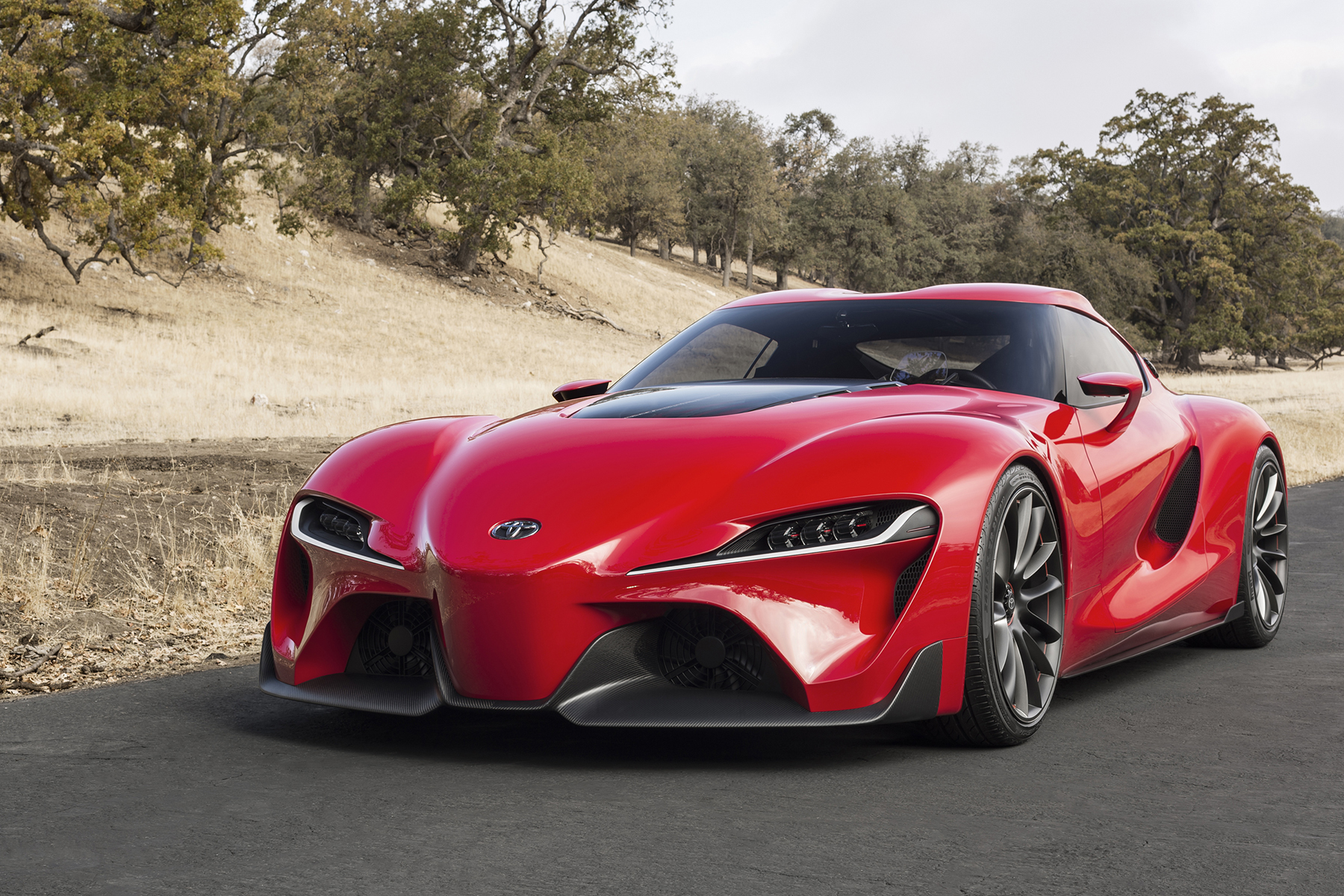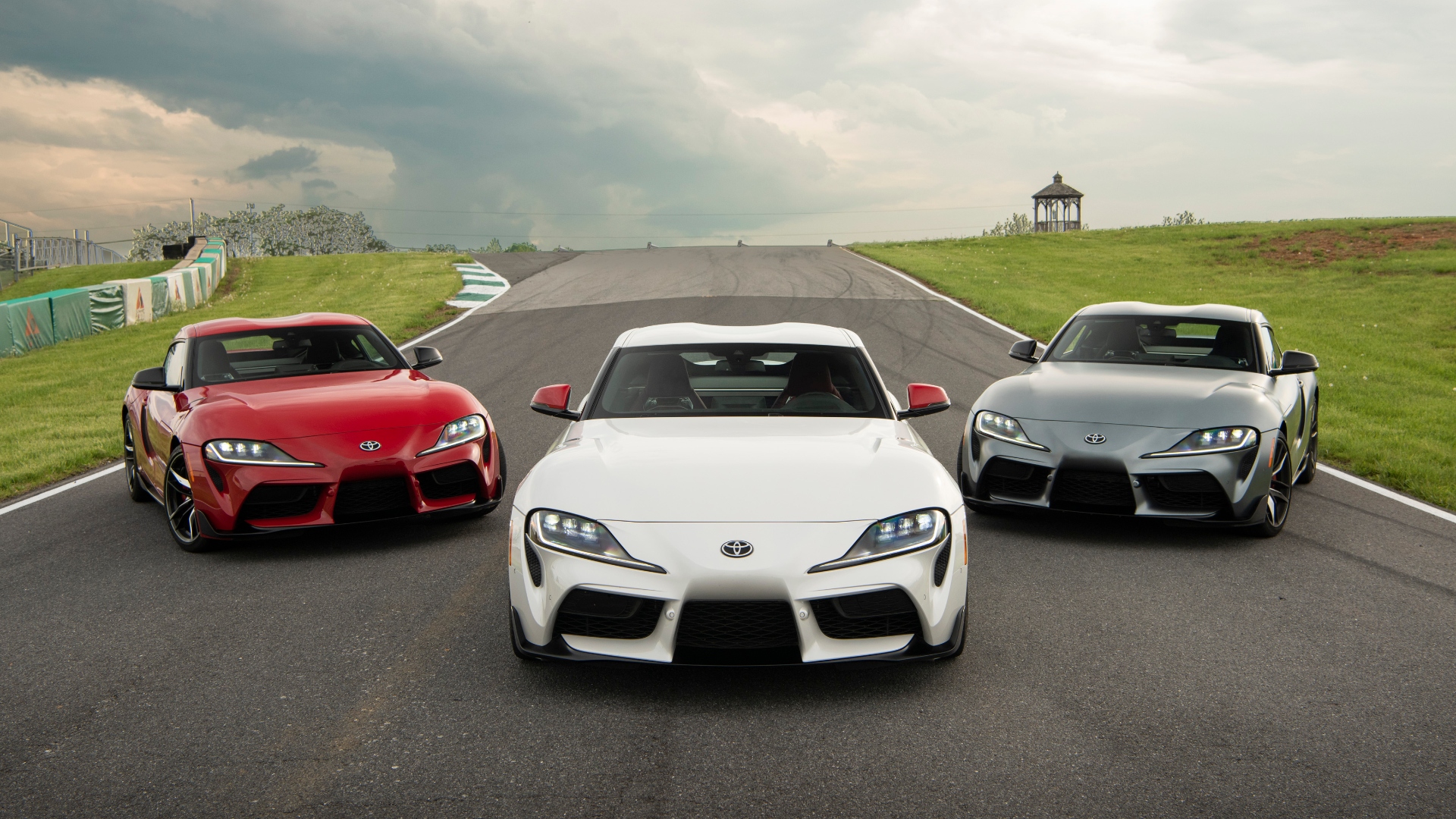
One of the most iconic names in Japanese motoring history is back. Yes, the fifth-generation Toyota Supra is finally here as of its reveal in full at the 2019 Detroit Auto Show, after a 17-year hiatus. The first drives are taking place and we’ll give our verdict on the new GR Supra imminently. Can it live up to the hype?
The Supra’s ancestors include some of Japan’s most legendary performance cars. The brawny six-cylinder sports coupé first debuted in 1978, then the last Supra rolled off the production line in 2002 after 593,337 had been made. Toyota Supra, this is your life, so far…
A40: the first generation

The first incarnation of Toyota’s ultimate sports coupé was actually a more powerful version of the smaller Celica. First called Celica XX, and powered by a 2.0-litre six-cylinder engine, the XX was launched in 1978. The Supra badge would arrive a year later.
The Celica XX hit the US in 1979, and was christened Celica Supra to avoid a naming clash with a brand of beer. The legend was born. Engine size grew to 2.6 litres, but power was just 110hp. With a 0-60mph time of 10.2 seconds, it was a little more slack than super, and definitely not an out-and-out sports car.

The original Celica Supra continued for another two years, aimed at the luxury end of the coupé market. Its smooth straight-six engines and high-end trappings provided Toyota with a grand tourer to take on Datsun’s established range of Z-cars.
A60: the second generation

July 1981 saw the arrival of the second-generation Celica Supra (still christened Celica XX in Japan). More angular than its predecessor, the new car was the same as the third-generation Celica from the B-pillar backwards.
As before, though, the Supra’s longer front end allowed Toyota to drop in six-cylinder engines, including its new 145hp, 2.8-litre 5M-GE unit. A five-speed transmission was standard. Contemporary Celicas, meanwhile, still had two fewer cylinders.
Independent rear suspension, flared wheelarches and pop-up headlights gave an air of supremacy over the first-generation Supra, while ‘Performance Type’ (P-Type) and ‘Luxury Type’ (L-Type) models offered differing levels of equipment.
The Supra arrived in Europe in August 1982 and Toyota only brought 100 cars per month to the UK. Priced just above entry-level Porsche 924s, the Japanese car shared the German model’s front-engine, rear-wheel-drive ‘transaxle’ layout.
The second generation of Toyota’s big sports coupé also enjoyed success in the British Saloon Car Championship and Ulster Rally, campaigned by motorsport stars such as Win Percy, Barry Sheene and Per Eklund.
A70: the third generation

The third iteration of the Supra landed in August 1985, and moved the car on style-wise. More curvy lines lent the car an elegant, more grown-up look. The Supra also finally diverged from its Celica heritage, gaining a platform all its own.
Technically, the car had moved on, too. Part-aluminium double wishbone suspension featured on every corner, attached to links that filtered vibrations entering the interior. Toyota Electronically Modulated Suspension (TEMS) was available on some models, with ABS braking across the range.
In 1986, the Supra added another string to its bow. A removable targa top pandered to fresh-air fanciers who appealed for a hair-ruffling version of the Toyota coupé when it first appeared. Targa-topped US models gained the enticing ‘Sport Roof’ moniker.
Dependent on market, six-cylinder engines from 2.0 to 3.0 litres were available in the Mk3 Supra. Top of the tree from 1987 was a 235hp turbo. At long last, the Supra had the go to match its show: 0-60mph took 6.4 seconds.
The Supra got even hotter in 1988. The 270hp Turbo A was built to homologate the car for Group A racing in domestic and European touring car series, as well as the World Rally Championship. The limited-edition Supra 3.0 GT Turbo A was the period’s fastest Japanese production car. Zero to 60mph took just 5.0 seconds, and the 3.0 GT Turbo romped to 167mph.
An optional White Pack made the Supra brighter than the rising sun, while in 1991 Toyota dropped its JZ engine – which would also appear in its successor – into the Supra to create a 276hp powerhouse. It needed to move the game on thanks to the arrival of competitors such as the Honda NSX, Mazda RX-7 ‘FD’, and Nissan 300ZX.
A80: the fourth generation

Production of the A70 Supra ended in 1992. The fourth-generation A80 car was unveiled at the 1993 Chicago motor show, and was the culmination of four years of development. A more slippery shape with an optional rear spoiler signalled its performance potential.
Like the A70, the A80 Supra was leaner in its construction – even the carpet fibres and rear spoiler were hollow to shed weight – but was also more powerful than ever before. A naturally-aspirated or twin-blower 3.0-litre JZ engine gave between 220hp and 326hp. The six-speed Turbo gave true supercar-bothering performance.
So powerful was the new Supra, even rivals such as the Porsche 911 Carrera had problems keeping up. Brits and Europeans were only offered turbocharged models, and it’s easy to see why they shaded their German rival: the benchmark 0-60mph sprint was dispatched in a scorching 4.6 seconds.
With the Mk4, motorsport was once again on the agenda. The most competitive generation, the A80 did stints at Le Mans, Pikes Peak, mountain races in Switzerland, the US SCCA series, and was a leader in the All-Japan GT Championships from 1995 to 2003. In 2007, a modified Super GT car became the first hybrid to win a motor race: the 500bhp Denso SARD Supra HV-R took victory in the Tokachi 24-Hour endurance event.
Perhaps the fourth-generation Supra’s biggest claim to fame was to embed itself in the minds of car enthusiasts via its appearance in myriad computer games, including the legendary Gran Turismo and Need for Speed series. The A80 was also a big screen star, featuring in the first The Fast and the Furious film of 2001. The ride of Brian O’Conner, played by Paul Walker, the 700hp be-winged orange Supra inspired a host of copycat cars.
Even though UK sales had stopped in 1996, US drivers could still get their hands on a Supra until 1998. Costly upcoming emission regulations finally killed the Supra in 2002, the Japanese market not able to reverse an ever-decreasing annual sales tally. The Supra joined its Celica and MR2 relatives in Toyota’s sports coupé scrapyard.
The Toyota Supra is revived

However, in 2014, Toyota hinted at a return of its icon. Designed by Toyota’s Calty Design Research facility in Newport Beach, California, the FT-1 concept debuted at the North American International Auto Show in Detroit. In a case of life simulating art – and with a link to the A80 – the FT-1 also appeared in Gran Turismo 6 and the virtual car was used to pitch the concept to Toyota president Akio Toyoda.
The FT-1 (Future Toyota 1) was said to herald the ‘most capable, most exciting generation of vehicles the company has ever produced’. Billed as the ‘ultimate world-class sports car’ and ‘a true enthusiast track car in the iconic lineage of 2000 GT and Supra’, the FT-1 whipped up a frenzy among Supra fans.
2018 Geneva show star

The fifth-generation of Toyota’s range-topping sports coupé was shown as a thinly-veiled ‘modern racing concept’ at the 2018 Geneva Motor Show. We knew the GR Supra Racing Concept was the finished article, albeit with race-spec body addenda. It looks ready to take to the grid at Le Mans and battle GTE-class monsters.
The return of an icon

The new Supra was finally revealed in January 2019. It made its in-the-metal debut at the Detroit Motor Show. It’s twinned with the new BMW Z4 – including engines, transmission and much of the cabin – and there were questions over whether it would wind up being a bit too ‘BMW’. Enthusiasts also worried whether the legendary 2JZ-equipped A80 would find a true successor in the new car.
Going racing… again

Toyota wants the new Supra to win on the racetrack, just as previous generations did. This Supra GT4 Concept was unveiled at the Geneva Motor Show, as a preview for a racer that could go toe-to-toe with Aston Martin, Porsche and McLaren in GT4 racing.
A Supra… NASCAR?

Yes, you read that right. ‘Race on Sunday, sell on Monday’ isn’t dead, especially in America. Toyota knows this, and as a truly global car, the Supra has to conform to certain market tastes. That’s led to this rather interesting creation: a NASCAR in a Supra suit. Spot the differences between it and the GR Supra Racing Concept…
2019’s Suprastar sports car?

Now, the Supra is out in the world and Motoring Research is getting behind the wheel of the new Supra. Will it be as the detractors say – a thinly-veiled re-badged Z4? Or will it be a sports car befitting the legendary name? We’ll let you know very soon…